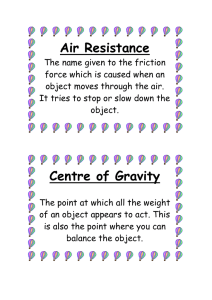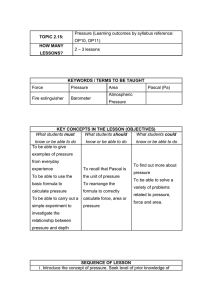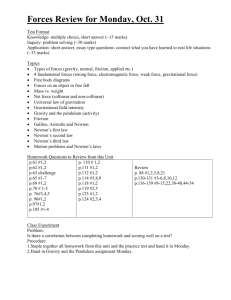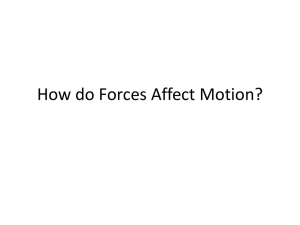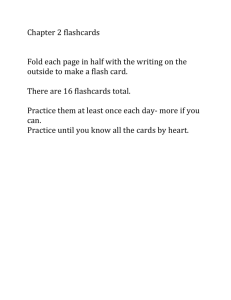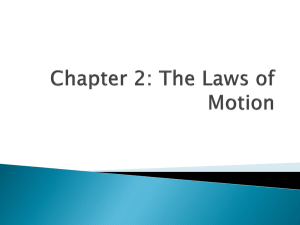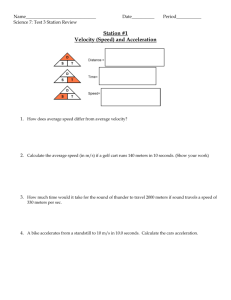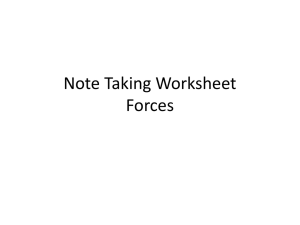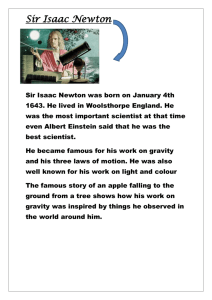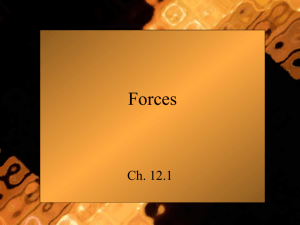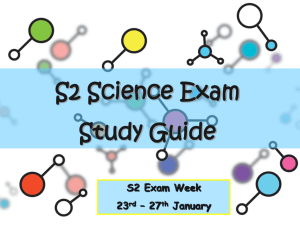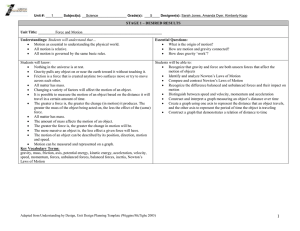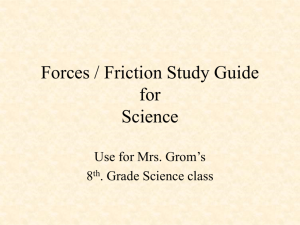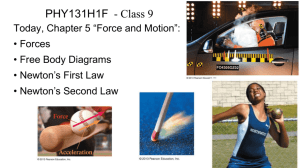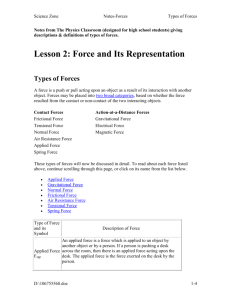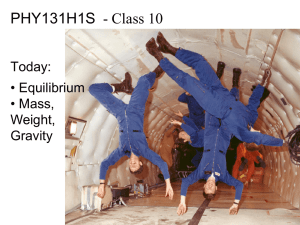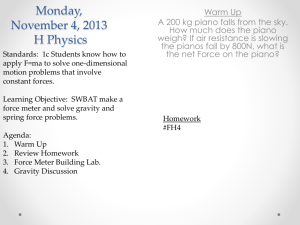TOPIC 2.14: Forces (Learning outcomes by syllabus reference: OP4
advertisement
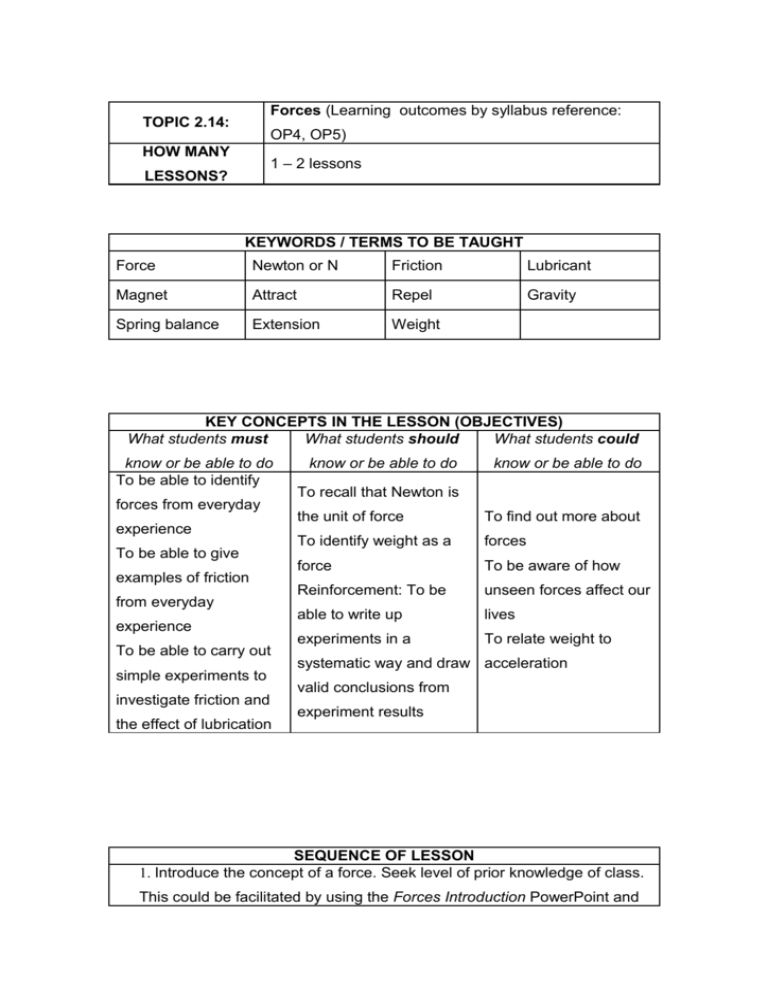
Forces (Learning outcomes by syllabus reference: TOPIC 2.14: OP4, OP5) HOW MANY 1 – 2 lessons LESSONS? KEYWORDS / TERMS TO BE TAUGHT Force Newton or N Friction Lubricant Magnet Attract Repel Gravity Spring balance Extension Weight KEY CONCEPTS IN THE LESSON (OBJECTIVES) What students must What students should What students could know or be able to do To be able to identify forces from everyday experience To be able to give examples of friction from everyday experience To be able to carry out simple experiments to investigate friction and the effect of lubrication know or be able to do know or be able to do To recall that Newton is the unit of force To find out more about To identify weight as a forces force To be aware of how Reinforcement: To be unseen forces affect our able to write up lives experiments in a To relate weight to systematic way and draw acceleration valid conclusions from experiment results SEQUENCE OF LESSON 1. Introduce the concept of a force. Seek level of prior knowledge of class. This could be facilitated by using the Forces Introduction PowerPoint and encouraging student input during the presentation. 2. Carry out short experiments in groups to show the effects of forces, i.e. magnetic forces, friction with and without a lubricant, gravity and weight. Discussion of key vocabulary, results and conclusions. 3. Review – whole class discussion/dissemination of ideas/extra information. Possibility of using Keyword Game (in the Classroom Activities section of this resource pack) to facilitate student understanding 4. Further class work/homework – see Forces Worksheet. Devise extension challenges as required. 1. DIFFERENTIATE BY CONTENT (In what ways can I vary the content of what I am teaching?) (A) Complexity of content: (concrete, symbolic, abstract) Concrete Real materials Symbolic associated with forces, Units: Newton (N) e.g. magnets, spring Newspaper articles/ balances, blocks, oil, personal experiences soles of shoes, football relating to forces, boots etc. images of forces, e.g. Falling objects to rockets taking off demonstrate gravity Abstract Weight as a force How do we know about unseen forces? Appreciation of the significance of forces in our daily lives, e.g. car design (B) Variety of resources As listed above. Also potential use of the Internet and/or school car park, e.g. car engine for further exploration of material related to forces. (C) Variety of learning environments Classroom, school laboratory, computer room/library in school (as indicated above), visit to a mechanic 2. DIFFERENTIATE BY PROCESS (How will I teach the lesson?) Sequence of lesson as laid out above Introduction – using concrete or symbolic material or a general class discussion Divide class into groups to carry out simple experiments. Students may take notes or draw diagrams of any observations made. For resources, guidance and support related to facilitating student experiments and investigations, see www.juniorscience.ie Work with more able students to extend their thinking and language use. 3. DIFFERENTIATE BY OUTCOME / PRODUCT (How will the student demonstrate understanding?) See Worksheets, Classroom Activities and Experiments sections of this resource pack. • Students may use a template from the Experiments section to assist them with the write-up. • Students may record their observations on tape. • Students could create a poster showing images of different forces with brief descriptions of the forces taking place, e.g. push, pull, turning. • More able students may come up with different ways of measuring invisible forces, e.g. gravity. • Whole class review work completed at end of class • Homework: Forces Worksheet if not used for class work. Specify time to be allocated to this work at home. FINALLY - ANY OTHER POSSIBILITIES FOR THIS LESSON? • Collage of scenes showing forces • DVD/Video of forces in action, e.g. volcano erupting, racing cars • Other written activities, e.g. a log of the different forms of forces encountered by students in one day or an extended piece of writing entitled ‘Living with Forces’ • Visit to a playground to investigate swings, see-saws and turning forces • Cross-curricular links: Geography • Internet search for material on forces • Suggested Internet links include www.bbc.co.uk/schools, www.scoilnet.ie, www.juniorscience.ie, www.skoool.ie and http://classroom.jc-schools.net/sci-units/force.htm • For advice on enhancing curricular access through the use of mobile ICT, see www.laptopsinitiative.ie
